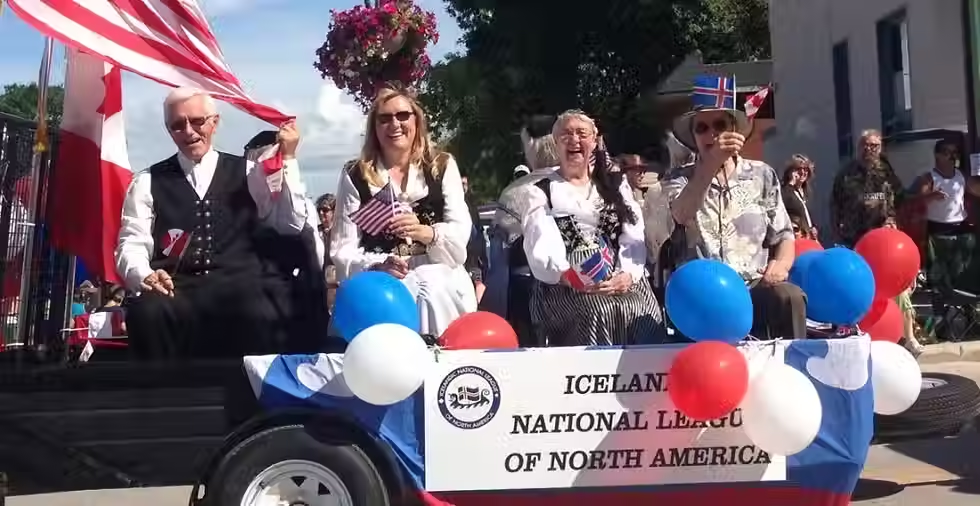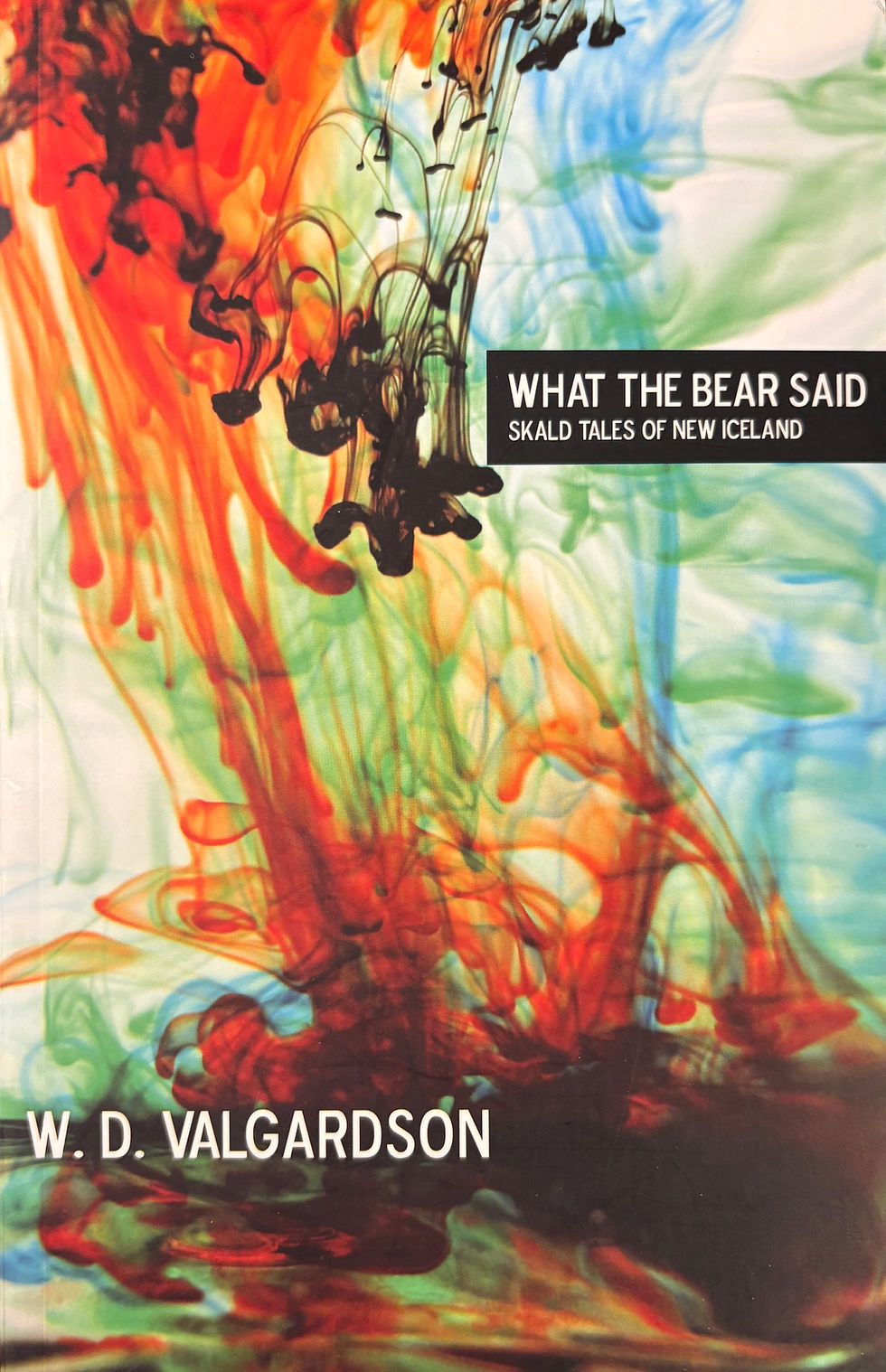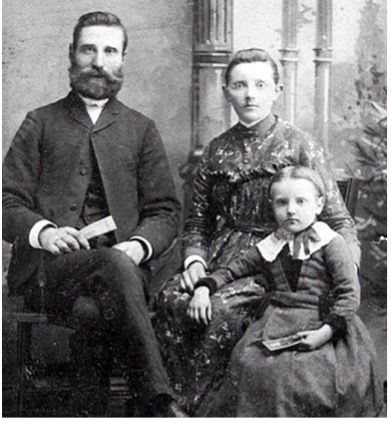The Origins of Vínarterta
- Jón Jóhannesson Jónsson

- Dec 23, 2023
- 5 min read
By Jón Jóhannesson Jónsson

Western Icelanders have loved vínarterta for a very long time. They have been making it for over a century for Christmas celebrations, weddings and almost any social gatherings where Western Icelanders are asked to bring a dessert to share.
The Icelandic Roots Vínarterta Research Center (IRVRC) has recently begun to research this phenomena and has made some significant discoveries:
Vínarterta is Controversial
Our field research has shown there is only one way to make a vínarterta. We have polled dozens and dozens of vínarterta bakers. This fact has been made abundantly clear by all who spoke about the role of vínarterta in the life of Western Icelanders. We have accepted this statement as being true.
However, when pressed for details, the bakers we interviewed agreed to share their recipes to demonstrate what the one true vínarterta should consist of. Upon examining these texts, we have discovered basic similarities from recipe to recipe. However, when comparing one recipe to another, we found ingredients varied, cooking methods varied, even the very shape of the vínarterta varied. When we asked a baker to explain the difference between their recipe and another’s, the reply was often “I make my lang lang amma’s recipe, which was brought over from Iceland. This other recipe you are showing me is wrong.”
We will continue to explore this apparent paradox.
Vínarterta’s Origin is Unknown
There has been a fair amount of research into the origin of vínarterta, but much more work needs to be done on this subject. The IRVRC has made discovering that origin a priority. Wikipedia has traced vínarterta’s first appearance in Iceland to a time after 1798 and as arriving from Denmark. The account does not identify the port of entry in Iceland. We are also working to discover whether it first landed in Iceland as a recipe or a completed cake. In this regard, we have developed a theory based on a single family’s story that has come to our attention. The IRVRC has been unable to find documentary proof but finding that proof is a high priority of this institution.
A Possible Origin of Vínarterta is Discovered
Again, the IRVRC urges caution in accepting the following origin story. It is a tantalizing theory, but without physical proof, it remains only a working theory at present.
A member of our research team first revealed this story during our mid-morning coffee break, while we enjoyed our cup along with a generous slice of vínarterta, as is our custom.
He began by saying he hadn’t slept well the previous night. He had been startled awake by a dream and couldn’t return to sleep. During his sleeplessness, he thought about this dream.
In the dream he was a young boy, only five or six years of age. He was at a noisy family gathering in his amma and afi’s old farmhouse. He thought it might have been a family Christmas party, because so many of his out-of-town cousins were there. Above the din, he heard an uncle’s voice saying, “I kid you not, this is true.” Turning in the direction of the voice, he saw his uncle Burt surrounded by a gaggle of cousins, gesturing wildly.
In the dream, our colleague, as a young boy joined the group as another uncle challenged the uncle telling the story.
“Give it a break, Burt! You know she just made that up because you were gullible enough to believe it.”
Uncle Burt yelled back, “Don’t believe it then, I don’t care. These kids know it is true because I know it is true. And that’s all that matters.”
With that, Uncle Burt finished telling his story, exiting the throng of cousins and went back into the kitchen to refill his cup with hot chocolate.
In this dream, I turned to Billy, a much older cousin that I often would look to for guidance. Billy had heard the entire story. I asked him what Uncle Burt had been talking about.
Billy said Uncle Burt was telling us that our lang lang amma had told our lang amma a story about the origin of vínarterta when our lang amma was just a little girl, years before she emigrated to North America.
She told the story on Christmas Eve. They were of course very poor, and lived as servants in the turf house of a struggling farm near Akureyri. As farm servants they could only expect a Christmas dinner with a few extra cookies or maybe even a slice of vínarterta. The child asked to hear the story of the first vínarterta in Iceland again. She often asked to hear the story at bedtime. As lang lang amma put the girl to bed, she began to tell the story.
Years and years ago, her brother Sveinn had traveled to Denmark for work. After several years he returned home to Iceland. He brought a cake with him that he called a “vínarterta.” But it had spoiled on the journey. He asked his elderly mother, who was an amazing cook if she could possibly make another one. She took a bite of the spoiled cake to determine what it contained, and after spitting out the rotten morsel, she said she would try.
The first attempt was a disaster.
She decided to make only three cake layers, but it was difficult to keep the cooking fire at a consistent temperature and all three layers had burnt patches. She had only a few dried prunes for the fruit layers. She soaked them, but not long enough. She chopped the prunes as small as she could, but they were the consistency of a gritty paste. She cut a piece of the cake for Sveinn to try. He told her it tasted a little like the one he brought from Denmark if you could get past the burnt cake and gritty prune texture. As difficult as it was to admit it, his mother agreed that this first vínarterta was no winner.
Over the years, she persisted, trying new variations to her first recipe, making it a little sweeter when she had some extra sugar to spare. Her prune filling improved with a long low simmering. After several years and over two dozen attempts, she was happy enough to bring it to a funeral wake in 1799. Despite the sad occasion, as people sampled her cake, they began to smile and ask her what this new cake was. She smiled and said it was a cake from Denmark called “vínarterta.”
Years later, after she had shared her recipe with the woman of Akureyri and the surrounding farms, vínarterta was a common site at every gathering. Soon it appeared all over Iceland.

When people emigrated to North America, the recipe traveled with them. Our lang amma brought it with her when she came here, Billy said. Uncle Burt told us the vínarterta we were eating this very night was made from that original recipe.
And that was all our colleague could recall of his dream. The rest of us, the staff of the IRVRC, were excited to have this new line of inquiry and began to plan the next steps in our research.
You may ask “Is this story a credible lead in determining the where and when of vínarterta’s origin in Iceland?”
We can only respond by pointing to the Sagas as an example of stories that contain a truth so profound that they were written down after existing hundreds of years in the words of oral storytellers. The staff of the IRVRC is optimistic we will soon be able to confirm this truth. Furthermore, we see a time when future generations, with a slice of vínarterta in hand, will read a bedtime story to their young ones called the “Saga of the Vínarterta Dream.”
- Jón Jóhannesson Jónsson, December 12, 2023



